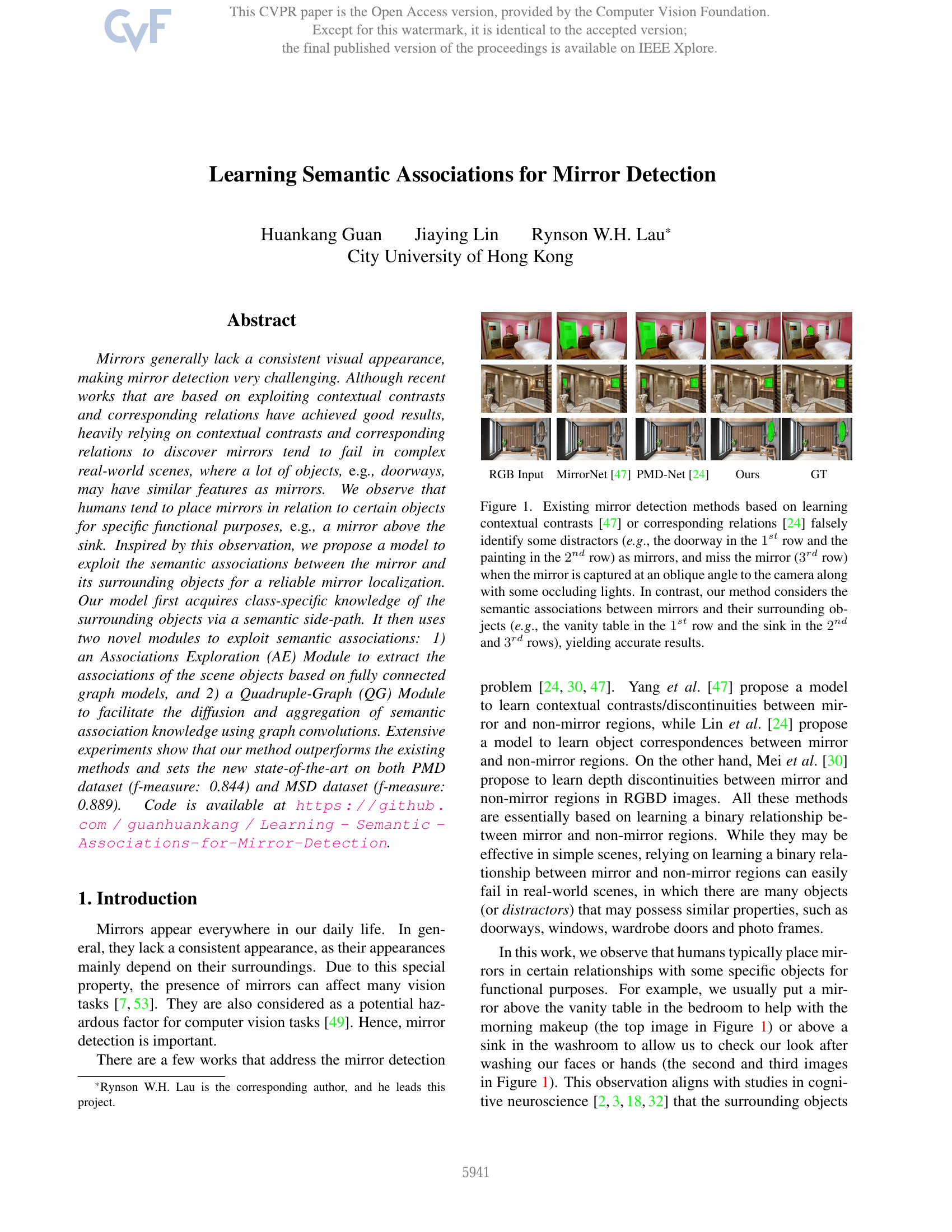Command Palette
Search for a command to run...
{Rynson W.H. Lau Jiaying Lin Huankang Guan}

Abstract
Mirrors generally lack a consistent visual appearance, making mirror detection very challenging. Although recent works that are based on exploiting contextual contrasts and corresponding relations have achieved good results, heavily relying on contextual contrasts and corresponding relations to discover mirrors tend to fail in complex real-world scenes, where a lot of objects, e.g., doorways, may have similar features as mirrors. We observe that humans tend to place mirrors in relation to certain objects for specific functional purposes, e.g., a mirror above the sink. Inspired by this observation, we propose a model to exploit the semantic associations between the mirror and its surrounding objects for a reliable mirror localization. Our model first acquires class-specific knowledge of the surrounding objects via a semantic side-path. It then uses two novel modules to exploit semantic associations: 1) an Associations Exploration (AE) Module to extract the associations of the scene objects based on fully connected graph models, and 2) a Quadruple-Graph (QG) Module to facilitate the diffusion and aggregation of semantic association knowledge using graph convolutions. Extensive experiments show that our method outperforms the existing methods and sets the new state-of-the-art on both PMD dataset (f-measure: 0.844) and MSD dataset (f-measure: 0.889).
Benchmarks
| Benchmark | Methodology | Metrics |
|---|---|---|
| image-segmentation-on-msd-mirror-segmentation | SANet | F-measure: 0.877 IoU: 0.798 MAE: 0.054 |
| image-segmentation-on-pmd | SANet | F-measure: 0.795 IoU: 0.668 MAE: 0.032 |
Build AI with AI
From idea to launch — accelerate your AI development with free AI co-coding, out-of-the-box environment and best price of GPUs.